Around 150 NY’ers gathered in Downtown Brooklyn this past Tuesday evening to weigh in on the Department of Transportation's long-awaited design drafts of the Brooklyn-Queens Expressway Central, a 1.5-mile city-owned section with a 0.4-mile historic “triple cantilever” that extends from south of Atlantic Avenue to Sands Street.
The new design plans are what DOT Commissioner Ydanis Rodriguez refers to as an effort to foster transportation equity.
“Equity is not a word. Equity is a plan of action,” he said during the opening address of the public workshop, titled “Shaping a Vision.”
“We want to make sure we hear the voices of everyone from the north part to the south part of this corridor.”
The city revealed three designs: The Terrace; The Lookout; and The Stoop. The three are fairly similar to each other, though The Lookout will require a full replacement while the other two would necessitate a partial replacement if chosen.
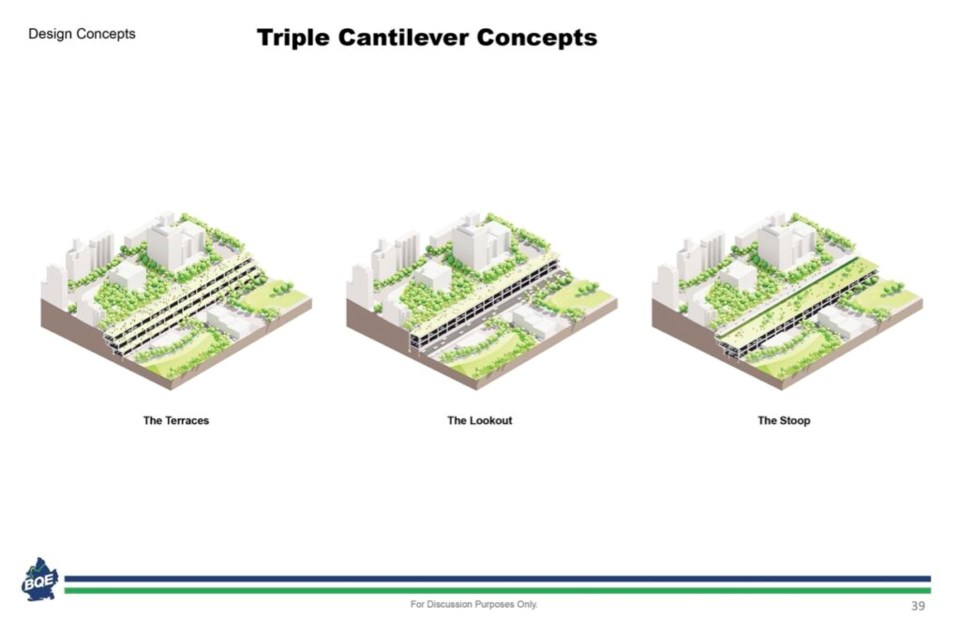
However, what seemed to rouse the most interest was the city’s proposal to bring back the third lane. Whether the third lane would be a shoulder, a high-occupancy vehicle lane or simply an additional lane, no concrete answers were given.
“If we started with concepts that only work in a very narrow configuration, we know that that's not going to pass through from our experience,” said a DOT official.
“It doesn't make sense to get everybody hyped up about a concept that's not going to get to the next step. We wanted to start with something that is reasonably going to get to the next phase when we get to the environmental process.”
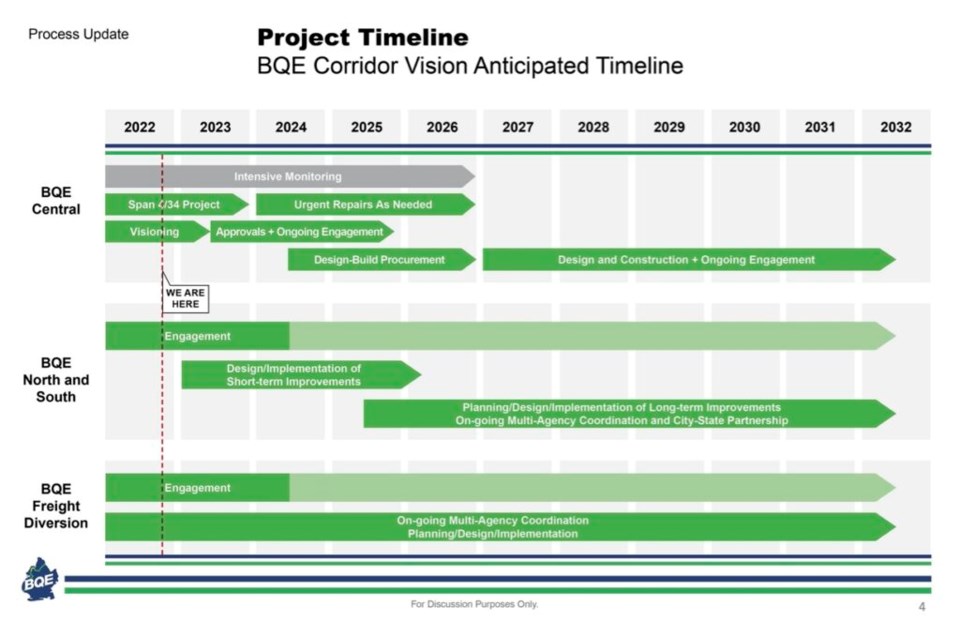
With construction set to start in 2027 and continue through the early 2030s, the agency is now focused on receiving feedback on initial concepts from the public.
According to David Vega-Barachowitz, associate principal at WXY Studio and lead presenter of the evening, “This process is not a unilateral one. As you've seen from prior processes, if people don't like something, we need to come back to the public and find something they like.”
The “visioning” process is set to end in mid-2023, in time for the DOT to begin the environmental impact statement process and apply for grants.

On questions of the environmental impact, including noise pollution and air quality, “It's very important to the mayor that we consider clean construction, resilient design and we’re making sure that we incorporate that type of design into the final concepts," said DOT Chief Strategy Officer Julie Bero.
Winnie Hu, a transportation reporter for the New York Times, said that Mayor Adams’ decision to rebuild the B.Q.E. rather than preserve it will mean tapping into the billions of federal infrastructure dollars: “That money won’t be available forever, so speed is suddenly crucial,” she said in an interview with the Times. “But a lot of critics are asking if you can come up with something transformative in this expedited time frame.”
The urgency around addressing the rapidly deteriorating state of the B.Q.E. cannot be understated.
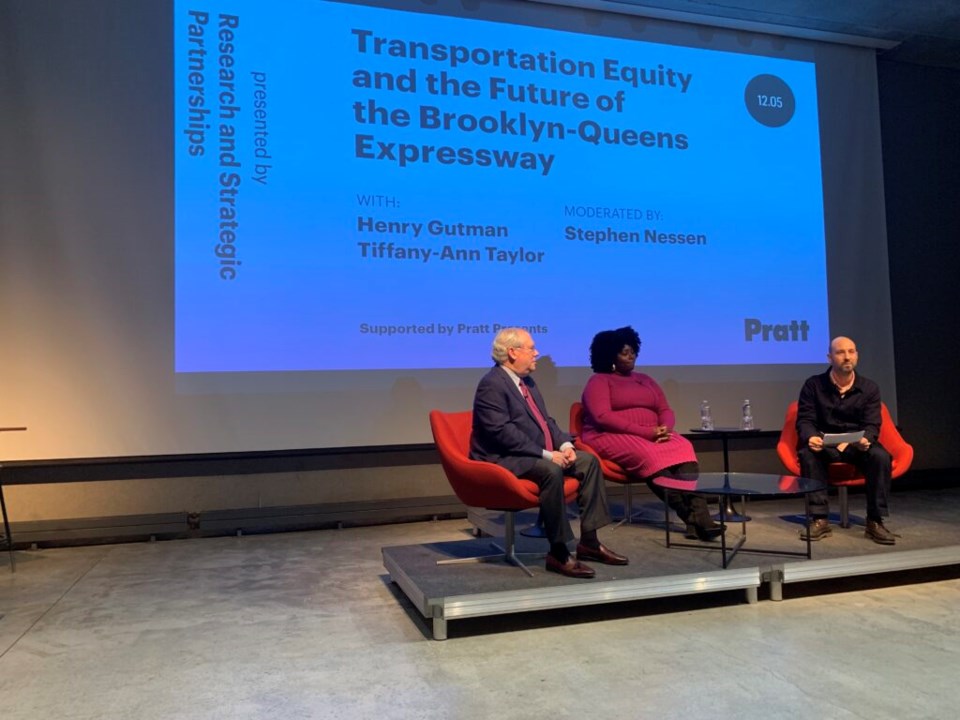
During a panel discussion at Pratt Institute on Monday, former DOT Commissioner Hank Gutman “scared the daylights” out of the audience as he detailed the crumbling state of the expressway.
“That highway was built 70 years ago with an expected useful life of 50 years. It was designed to accommodate trucks as heavy as 72,000 pounds, which was then the legal limit,” he said.
“Now the limit is 80,000, and we found that something like 30% of the trucks were over, some by as much as 180,000 pounds, a hundred thousand pounds over the limit.
“So, we've abused it in terms of weight consistently through its lifetime.”
Also on the panel, that night was Tiffany-Ann Taylor, vice president for Transportation for Regional Plan Association. She agreed that the city does not have the luxury of time, however, she urged the city to consider a comprehensive vision that considers truck and freight.
“90% of goods coming in and out of New York City arrive and depart by truck,” she said.
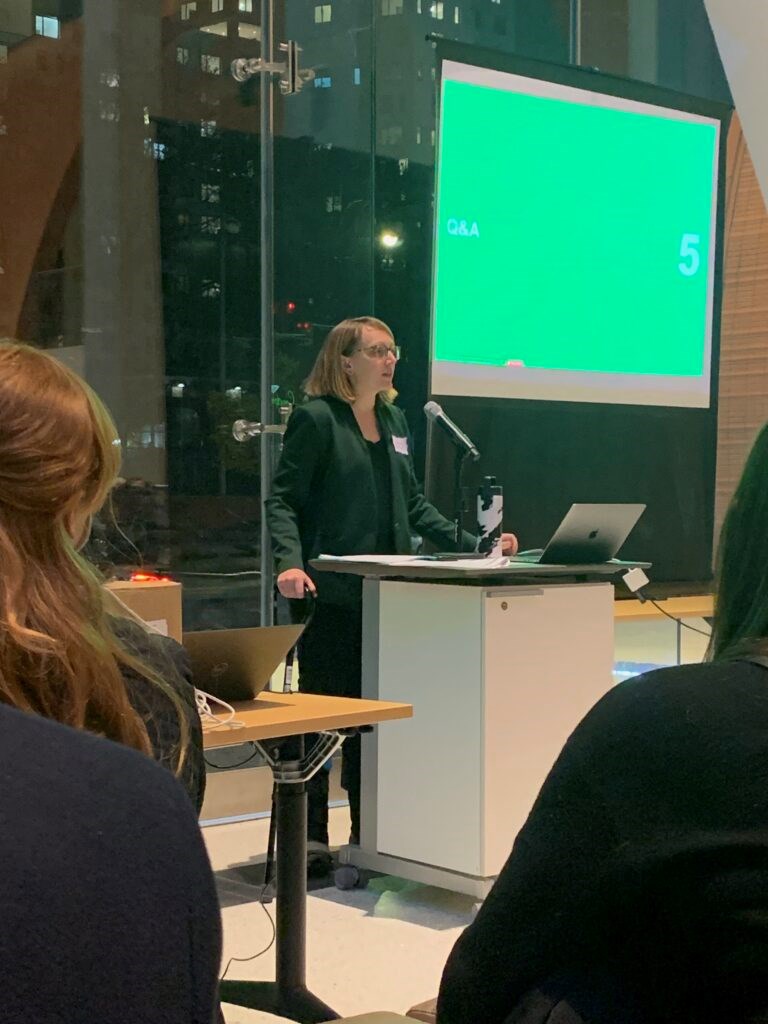
“That is a large amount. And because trucks have limited access to how they can go about the city, there needs to be an approach that tackles how we revise the stretch of roadway, how we get goods to us in a number of ways.”
Both Gutman and Taylor emphasized that the B.Q.E. is not just a stretch of one and a half miles or the triple cantilever.
“Moses's Interstate Truck Highway through residential neighborhoods of Brooklyn and Queens has wreaked havoc all up and down the corridor,” Gutman said.
“And we on the panel put together by then Mayor de Blasio thought the notion of spending billions of dollars to address the one and a half miles without addressing the rest of it was fundamentally unjust.”
Borough President Antonio Reynoso also had questions about the plan's focus on the city-owned portion of the B.Q.E. rather than the whole stretch.
“What was initially presented as a comprehensive approach to re-envisioning the entire B.Q.E. corridor has quickly devolved into a process that is focused solely on the city-owned cantilever portion of the expanse,” Reynoso said in an article from amNY.
“This approach sidelines the environmental justice communities that have been negatively impacted by the B.Q.E. for decades.”
A lot is stacked against the DOT in its plan to renovate the B.Q.E. in the next four years. Only time will tell whether they listen to the public comments regarding the proposed designs, whether they will have enough time to pull off such an ambitious project, and whether the roadway will sustain until rebuilt.

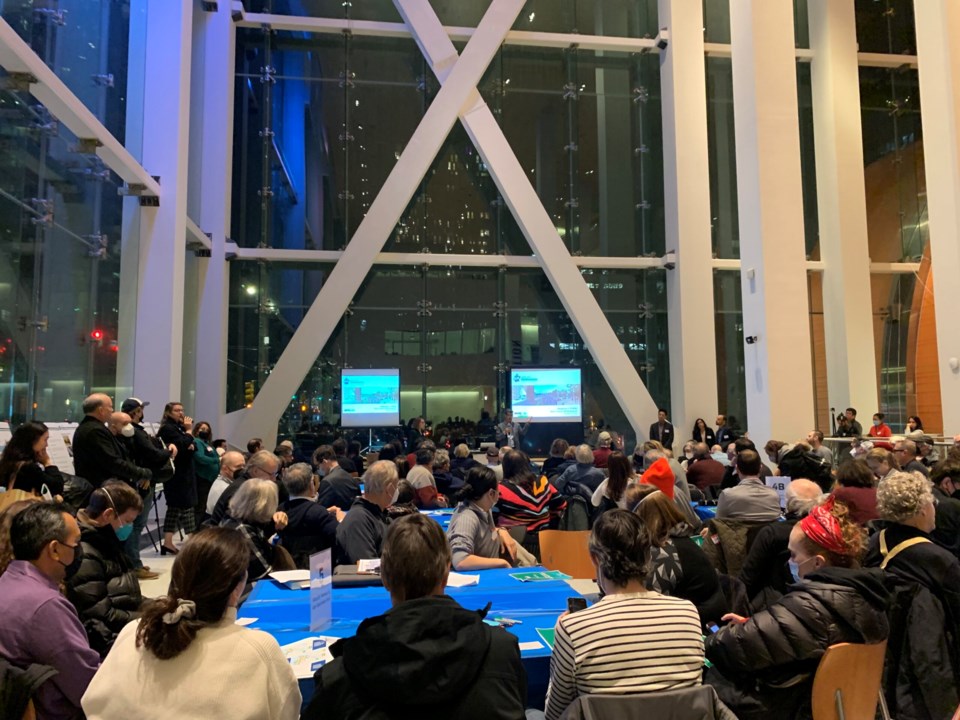

.png;w=120;h=80;mode=crop)
